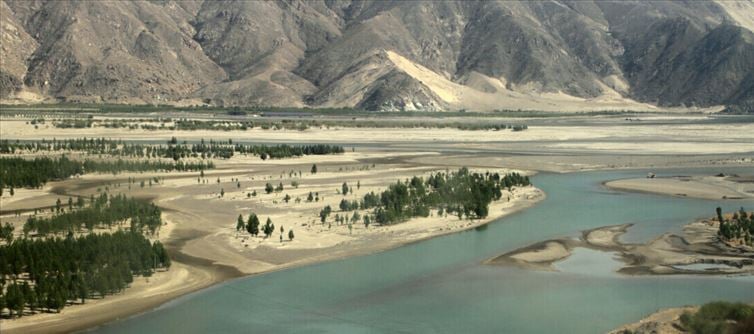
In a move that has raised concerns across the globe, china has approved the construction of what could become the world’s largest dam on the Yarlung Zangbo River in tibet, the river that flows downstream into india and bangladesh as the Brahmaputra. The decision, officially announced by the state news agency Xinhua on december 25, has prompted immediate backlash from neighboring countries, environmentalists, and geopolitical analysts.
The project, which is estimated to cost a staggering $137 billion (1 trillion yuan), is set to eclipse all previous records for infrastructure investments. If completed, it will not only become the largest hydropower project globally but also potentially reshape the political and ecological landscape of South Asia.
China's Strategic Move or Environmental Risk?
The Chinese government has framed the project as a cornerstone of low-carbon development, with a focus on boosting renewable energy generation. According to Chinese embassy spokesperson Yu Jin, the dam is intended to prioritize "ecological protection" while meeting China's energy needs. However, the rhetoric of ecological safety clashes with the reality of the project’s potential environmental impact. The massive scale of the dam, coupled with the complex geography of the Yarlung Zangbo River, raises serious concerns about the downstream effects, particularly in india and Bangladesh.
Geopolitical Tensions: A Looming Threat to South Asia
For india, the Brahmaputra is not just a river but a lifeline. The river is vital for irrigation, drinking water, and the livelihoods of millions of people in the northeastern states. The construction of such a massive dam in China-controlled tibet could disrupt the flow of water into india, leading to significant shortages, especially during dry seasons. In addition, the diversion or regulation of water could exacerbate already existing tensions between the two nations over border issues.
bangladesh, further downstream, is also deeply concerned. The country relies heavily on the Brahmaputra for its agriculture and water resources. Any alteration in the river’s flow, especially for such a large-scale infrastructure project, could lead to devastating impacts on the country’s economy and food security. Both india and bangladesh have long voiced concerns over China’s increasing control over transboundary rivers, fearing that such projects could be used as leverage in geopolitical negotiations.
Environmental and Social Impact
Beyond the political and strategic concerns, the environmental implications of the dam are vast. The Yarlung Zangbo River flows through a region known for its fragile ecosystems and biodiversity. The construction of the dam and the alteration of the river's flow could lead to irreversible ecological damage. The flooding of vast areas, deforestation, and loss of wildlife habitats are just some of the anticipated consequences. Additionally, the relocation of thousands of people, especially from Tibet’s border regions, could further strain social dynamics.
International Response: Worries about Transparency and Cooperation
The secrecy surrounding the project’s full details and lack of transparency in planning have only fueled concerns. Critics argue that China’s unilateral decision to move forward without consulting downstream countries violates principles of shared river basin management and international cooperation. Both india and bangladesh have called for greater transparency, requesting detailed assessments of the dam's environmental, social, and geopolitical implications.
The Future of the Brahmaputra: A Pivotal Issue
As china pushes ahead with what could be the most ambitious hydropower project in history, the global community remains divided. Some argue that the dam could help china meet its renewable energy goals, while others see it as another tool in China’s growing geopolitical influence. The stakes for South Asia and the world are incredibly high, as the outcome of this project will not only affect the future of the brahmaputra river but also the delicate balance of international relations in the region.
In conclusion, China’s decision to build the world’s largest dam on the Brahmaputra is a controversial move with far-reaching consequences. Whether it will be remembered as a triumph of energy development or as a catalyst for ecological, political, and humanitarian crises remains to be seen. For now, the international community watches closely, awaiting answers to critical questions that could shape the future of the region for decades to come.




 click and follow Indiaherald WhatsApp channel
click and follow Indiaherald WhatsApp channel